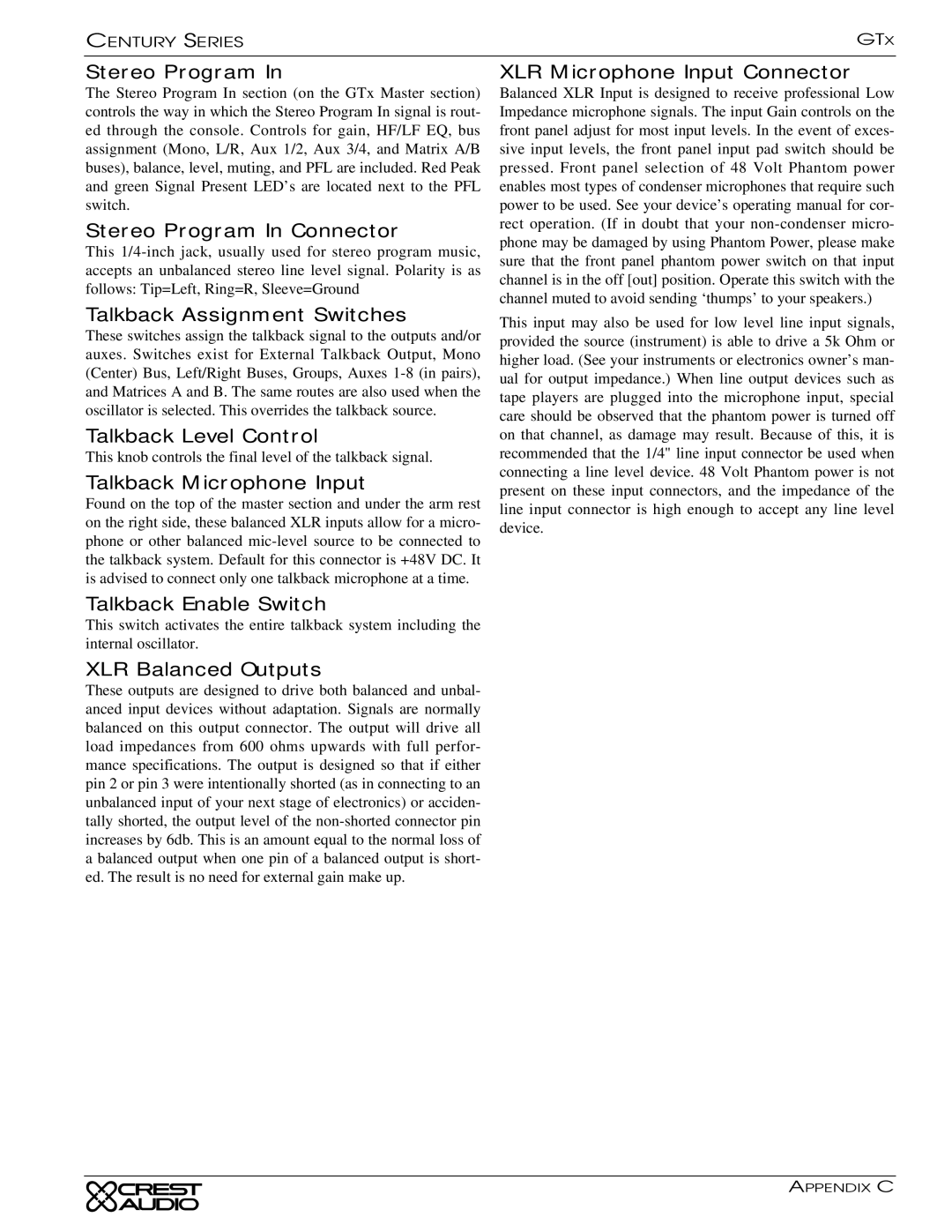CENTURY SERIES | GTX |
Stereo Program In
The Stereo Program In section (on the GTx Master section) controls the way in which the Stereo Program In signal is rout- ed through the console. Controls for gain, HF/LF EQ, bus assignment (Mono, L/R, Aux 1/2, Aux 3/4, and Matrix A/B buses), balance, level, muting, and PFL are included. Red Peak and green Signal Present LED’s are located next to the PFL switch.
Stereo Program In Connector
This
Talkback Assignment Switches
These switches assign the talkback signal to the outputs and/or auxes. Switches exist for External Talkback Output, Mono (Center) Bus, Left/Right Buses, Groups, Auxes
Talkback Level Control
This knob controls the final level of the talkback signal.
Talkback Microphone Input
Found on the top of the master section and under the arm rest on the right side, these balanced XLR inputs allow for a micro- phone or other balanced
Talkback Enable Switch
This switch activates the entire talkback system including the internal oscillator.
XLR Balanced Outputs
These outputs are designed to drive both balanced and unbal- anced input devices without adaptation. Signals are normally balanced on this output connector. The output will drive all load impedances from 600 ohms upwards with full perfor- mance specifications. The output is designed so that if either pin 2 or pin 3 were intentionally shorted (as in connecting to an unbalanced input of your next stage of electronics) or acciden- tally shorted, the output level of the
XLR Microphone Input Connector
Balanced XLR Input is designed to receive professional Low Impedance microphone signals. The input Gain controls on the front panel adjust for most input levels. In the event of exces- sive input levels, the front panel input pad switch should be pressed. Front panel selection of 48 Volt Phantom power enables most types of condenser microphones that require such power to be used. See your device’s operating manual for cor- rect operation. (If in doubt that your
This input may also be used for low level line input signals, provided the source (instrument) is able to drive a 5k Ohm or higher load. (See your instruments or electronics owner’s man- ual for output impedance.) When line output devices such as tape players are plugged into the microphone input, special care should be observed that the phantom power is turned off on that channel, as damage may result. Because of this, it is recommended that the 1/4" line input connector be used when connecting a line level device. 48 Volt Phantom power is not present on these input connectors, and the impedance of the line input connector is high enough to accept any line level device.
APPENDIX C
